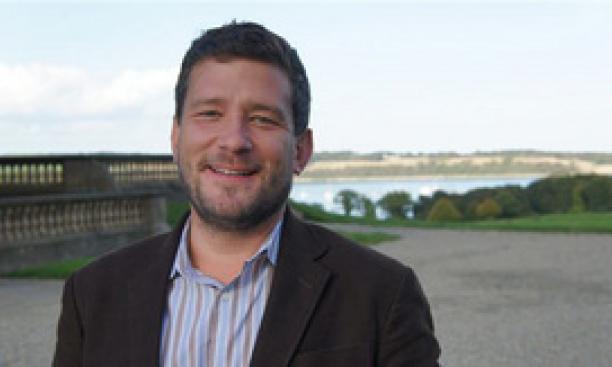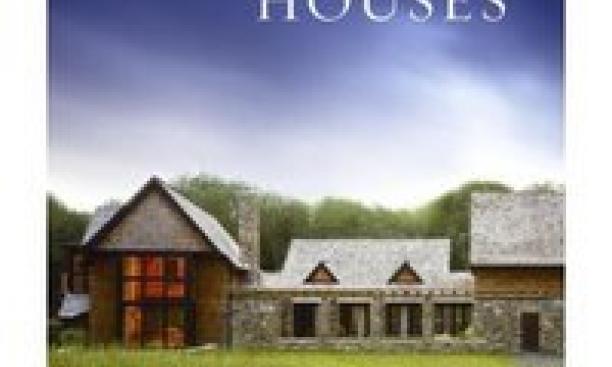

Architect Joel Barkley *93 has designed stunning homes inspired by a wide range of styles. Some of his most impressive projects — from a stately, Colonial Revival country house in New Jersey (pictured below) to a Hawaiian beach retreat and a sleek Manhattan loft — are featured in a new book, Houses (The Monacelli Press). One of the founding partners of Ike Kligerman Barkley, an architectural and interior design firm with offices in New York City and San Francisco, Barkley spoke with PAW’s Katherine Federici Greenwood about his work and his bees.
What do you seek to capture when designing a house for a client?
Usually with a client and a site there’s a given situation, whether it’s the client’s personality or the character of the houses around the given site or the history of architecture in a given place. So you never get a tabula rasa. And so what we always do at the beginning is listen to everything, whether it’s the neighboring buildings or the client. But that’s not to say we’re not in the mood to do something that’s just in our brain. We come with our own theme. So it is listening but also being ready with our own way of processing stuff.
Is your firm known for working in a “new traditionalism” style?
I would say more regionalism and contextualism. A lot of our projects are “new traditionalism,” but we also do modern work as well. For example, if I were doing an apartment in Greenwich Village, I probably wouldn’t be as interested in doing traditional detailing and traditional forms because there’s a sense of propriety about where you’re building. And we also do modern houses. So if I were on the edge of a really dramatic cliff in, say, Big Sur, I would probably go with something very dramatic and modern as opposed to something that you might consider traditionalist.

Regionalism [means] studying the kind of architecture that is either indigenous or was introduced into an area and seeing how you can work with that style. So that [the new building] shares a lineage. You want to take part in a conversation. You don’t want to just drop something that you feel could be anywhere.
Contextualism often is a kind of formal weaving of what’s directly around something. … If you are on a street and there are a bunch of porches, [for example], you might do a porch like they have with the same setbacks. … Overriding all that are the desires of the client. And we do like to do landmark houses that don’t just become more of the fabric. There is value in both approaches.
Did you and your co-founders learn from the architect Robert A.M. Stern, who wrote the book’s foreword?
We are all former employees of Stern. Tom [Kligerman] and John [Ike] are both former students. He was in a group of architects in the early 1970s that were called the grays … and started what was called the postmodern architecture movement. What Stern did later is go truly in a new traditionalist manner, and he stopped all the abstraction and a lot of the irony that was associated with postmodernism. … He took a really pivotal step in truly doing work that was historically informed.
“New traditionalism” – historically informed work – is a strong thread in your projects.
Absolutely. We love all styles of architecture, and we love the freedom to be able to do them with a lack of detachment. The irony of postmodernism is you would work with styles with a certain detachment and kind of a knowing irony. But what the “new traditionalism” allowed was to delve into architectural styles without guilt. For example, I love houses from the ’20s. And I’m totally happy if a client came to me and said, “Here is a house from the ’20s, would you build one?” Of course I couldn’t exactly replicate it, but I love all the moldings, I love all the detailing, I love the planning. … I don’t believe in a straightjacket of modernity that won’t let me do what I want. … We do live in a time of innovation … but I think a lot of people who work in modern styles don’t pay enough credence to things that did happen in the early part of the 20th century.
I see you are a beekeeper at your home in Bernardsville, N.J. How did you get into bees?
I was a partner in an organic restaurant in the Lower East Side that has recently closed. But I have a farm where I would raise the food for the specials in the restaurant. And beekeeping was part of the whole biodynamic theory of farming that I was interested in because it involved compost and organic principles. … Beekeeping is just a fascination with me.
Do you eat a lot of honey?
Yes, I actually do.
Interview has been condensed.

